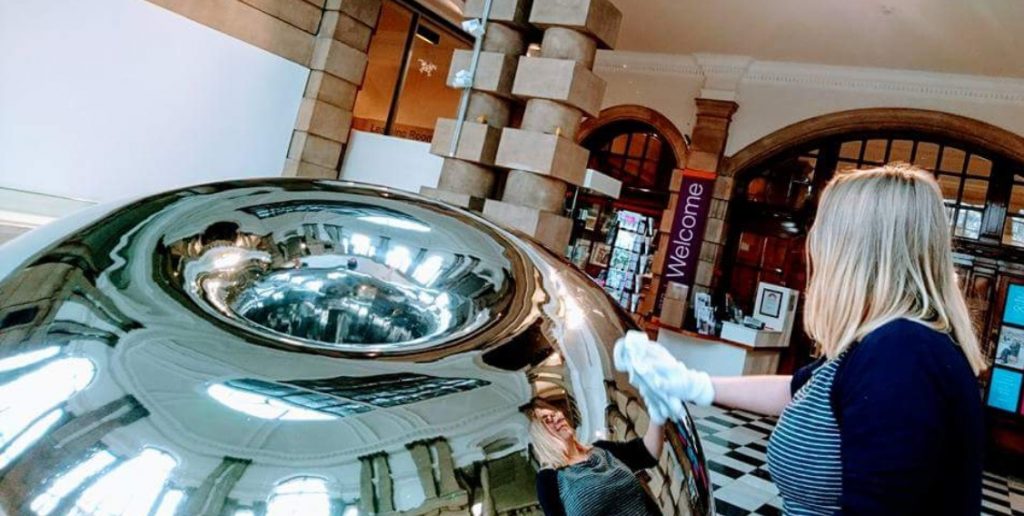Our latest blog has been written by Gemma Bailey, who is a our Curatorial Intern for Social History and Technology. She writes:
As a recent post-graduate with a Masters degree in Art Gallery and Museum Studies from the University of Manchester, I felt well-prepared for a Curatorial Internship at Bradford Industrial Museum. However, I could not know how varied and fascinating my job here would be. Each day is completely different, from researching and documenting collections, to planning exhibitions and cleaning objects.
I have even been lucky enough to work with the many different and fascinating collections at Bradford Museums such documenting glass negatives donated by the Bradford Mechanic’s Institute in the photographic archive. I chose outfits from the costume collection to form part of the Passenger, Parcel and Penny return exhibition and learnt about the World Cultures collection from Antonia Lovelace, curator of World Cultures at Leeds Museums.
Spending time working beside Pam Keeton, Collections Officer, I have learnt how to care for the objects in our collection, even helping to clean Anish Kapoor’s ‘Turning the world inside out’ at Cartwright Hall!

As a part of the Social History and Technology curatorial team for Bradford Museums and Galleries, a main responsibility of my job is documenting our vast collection. This is important because possessing a collection of objects donated by members of the public is a great responsibility and it is vital that museums maintain full and accurate records, so we know what they are, where they are and what condition they are in. All this will influence how we use these objects to display and interpret the history and society of Bradford.
Have you ever seen a little number on the edge of a museum label and wondered what it meant? This is an accession number and helps us to keep track of museum objects and find out more about their past. If we take a look at the accession register, where all museum objects are recorded, we can also find out who gave the item to us and who it previously belonged to. Getting to know the history and biographies of our museum objects can reveal all kinds of interesting stories and connections.

Another aspect of my internship has been assisting with exhibitions. Every exhibition at Bradford Museums starts planning months ahead and requires the help of many people! The curators research a theme and find objects to go on display. The conservators check the condition of the objects and decide what conditions they might need to be displayed in, for example some objects such as watercolour paintings can’t be exposed to too much light as they will start to fade. Information panels and text labels are written and printed ready for display. Technicians help to prepare a space for an exhibition, walls have to be painted and display cases rearranged. Workshops and talks are designed and arranged to support the exhibition.
I helped to install the ‘Grafters: Industrial Society in Image and Word’ exhibition in the main gallery space and learnt the many processes that go on behind an exhibition. Firstly, the exhibition space has to be prepared, walls are erected and painted and cases and stands are located. When loaned objects arrive for an exhibition they need to have condition checks to make sure no damage has occurred during transit. The finishing touches are just as important, making sure the mirror plates are concealed and painted, cleaning the exhibition space and arranging exhibition booklets in the space for visitors to use. Another exhibition I helped to install, ‘FlaX makes 10’, is currently on display at the Industrial Museum exhibiting the work of six local textile artists. Both ‘Grafters’ and ‘FlaX’ are on display at Bradford Industrial Museum until the beginning of November.



My internship at Bradford Museums and Galleries has taught me so much already and every day I learn something new about our fascinating sites. I have been focusing especially on the displays at Bradford Industrial Museum, learning about motive power and hand and machine powered looms. I am getting to know our vast collections, how Bradford’s industries and power are all connected and why these industries are an important part of Bradford’s past and future. I hope you can plan your own visit very soon and see for yourself just how brilliant our collections are!